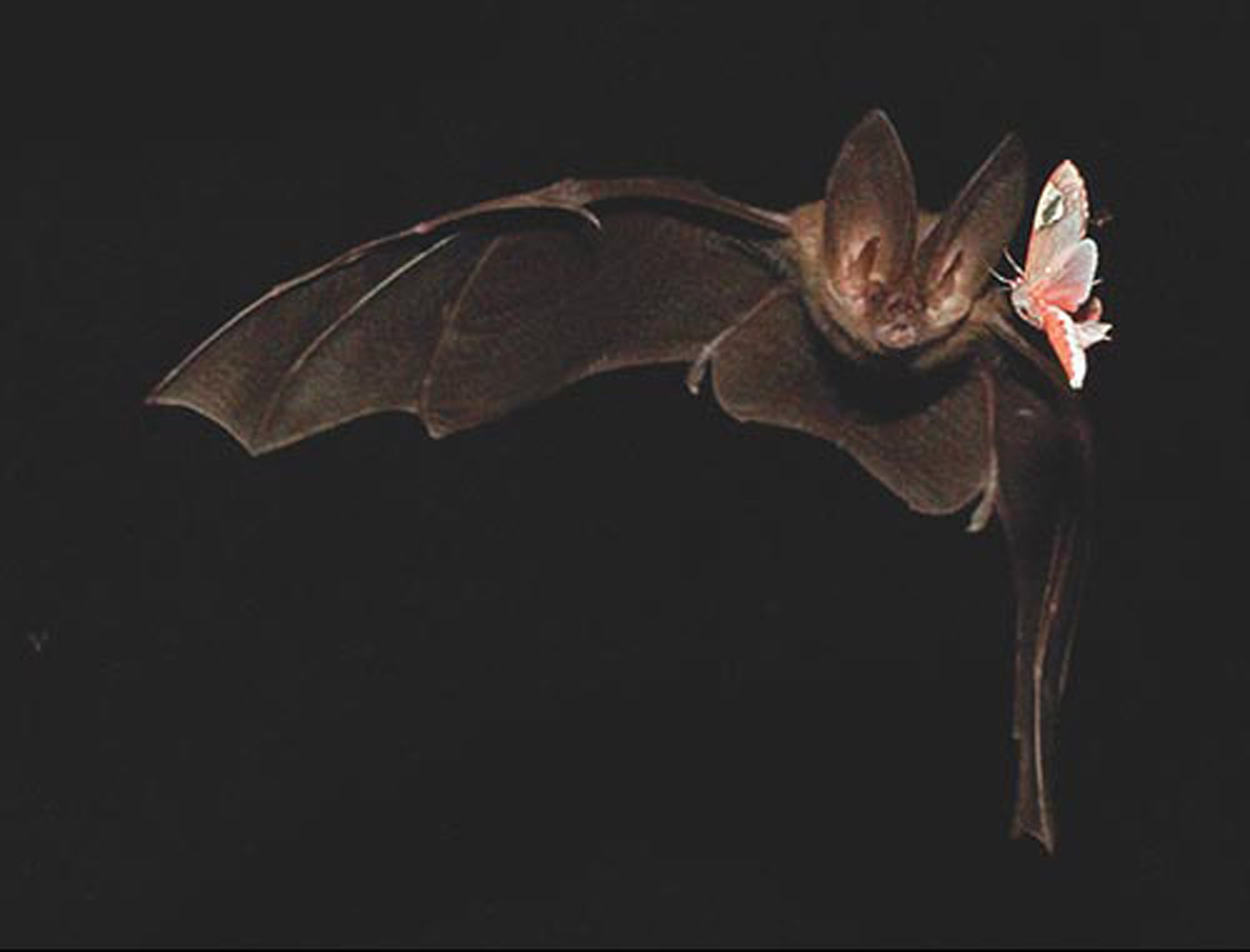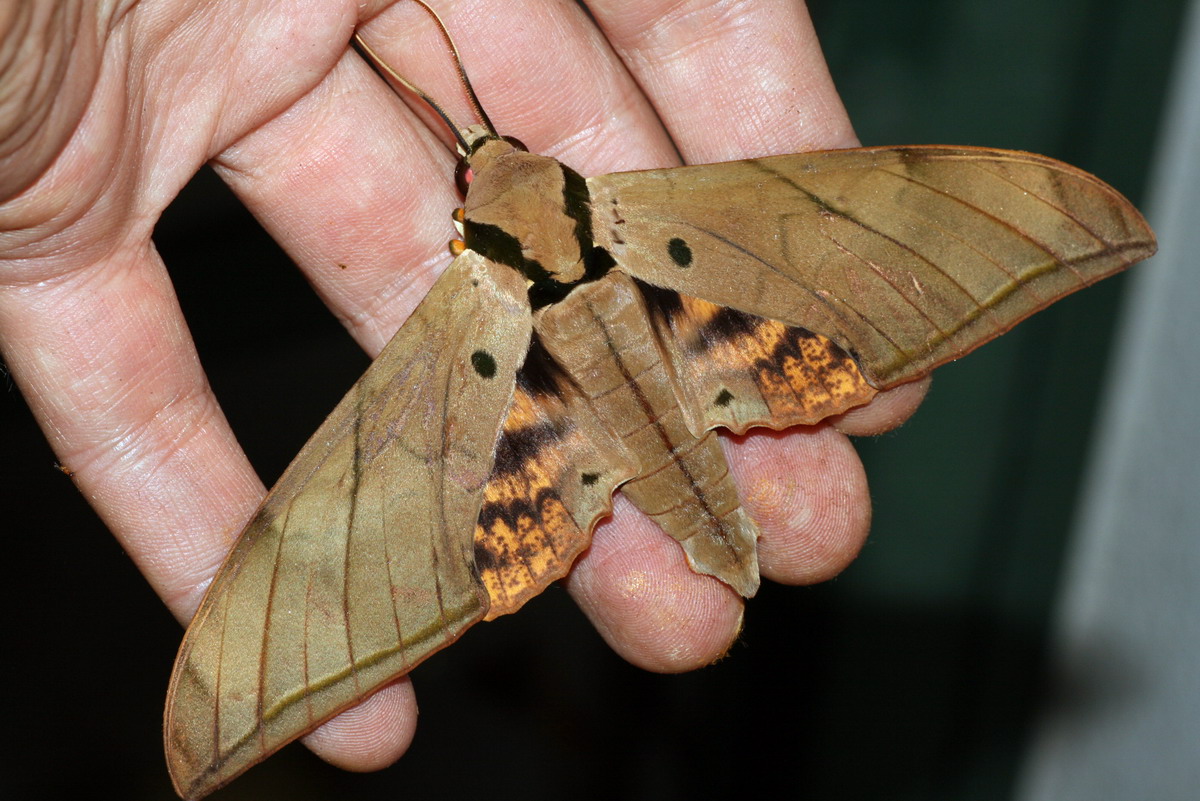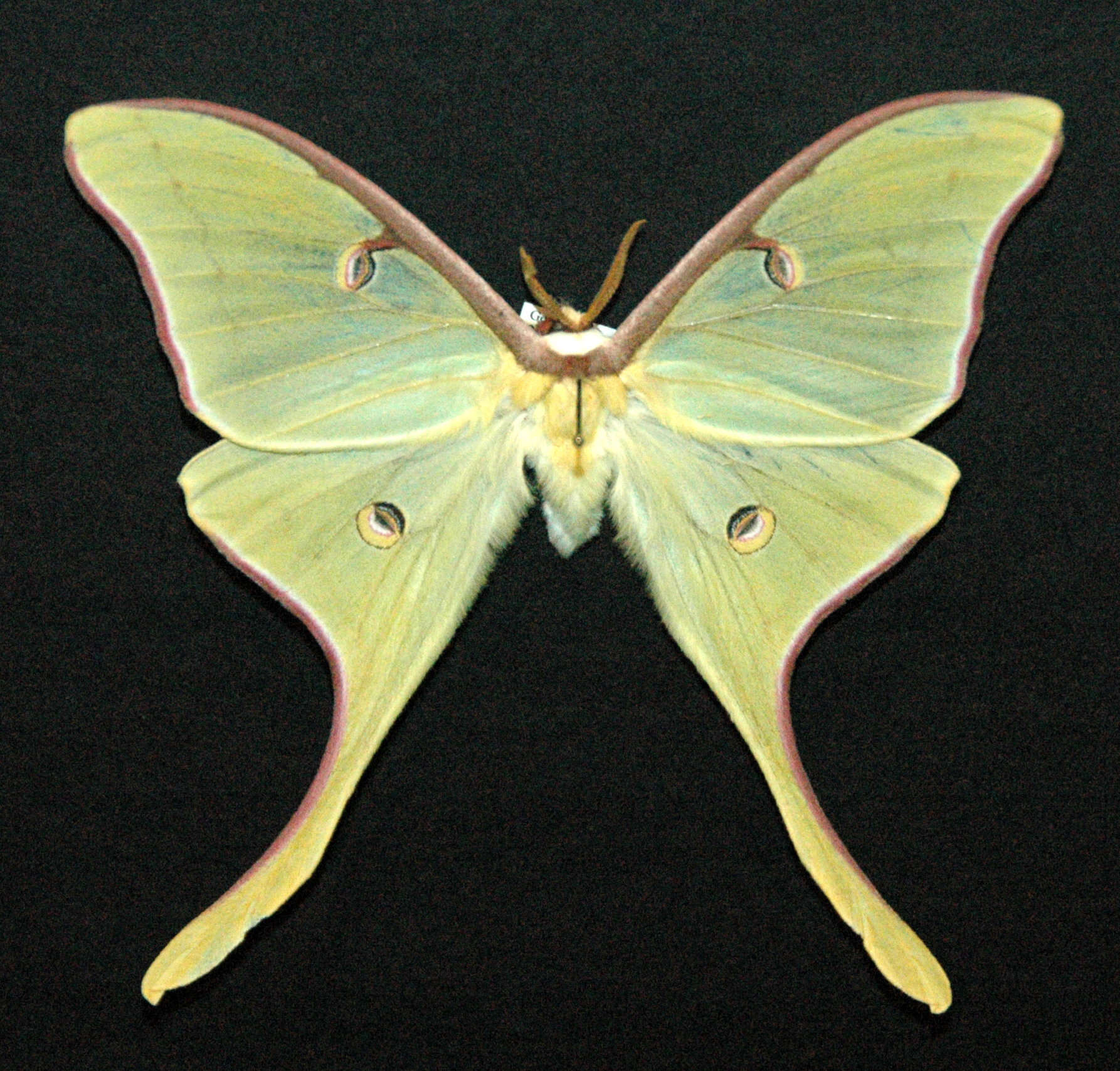A Tail of Two Moths
By William E. Conner
I predicted that any insect that flies at night must have a way of dealing with their fiercest nocturnal predators—bats. More recent findings by Akito Kawahara of the University of Florida and my former graduate student Jesse Barber of Boise State University confirm this prediction in two exciting ways.
June 9, 2015
The Long View Biology Animal Behavior
In my American Scientist article, "An Acoustic Arms Race," published in 2013, I described how my then-student Aaron Corcoran demonstrated that the tiger moth Bertholdia trigona produces ultrasonic clicks in response to being targeted by an echolocating, insectivorous bat. The clicks jam the bat’s sonar and prevent it from capturing the moth (see image below).

Images courtesy of Aaron Corcoran.
I predicted that any insect that flies at night must have a way of dealing with their fiercest nocturnal predators—bats. More recent findings by Akito Kawahara of the University of Florida and my former graduate student Jesse Barber of Boise State University confirm this prediction in two exciting ways.

Photograph by Aaron Corcoran.
In their recent paper in the Proceedings of the National Academy of Sciences of the U.S.A., Kawahara and Barber describe sonar-jamming signals in a charismatic group of moths called hawkmoths (in the order Lepidoptera, family Sphingidae). Using behavioral methods, they showed that hawkmoths produce sound by rubbing specialized scales on their genitalia across a filelike structure on their abdomens, in a process called stridulation. (See videos here.)

By Alexey (Hawkmoth (Ambulyx pryeri) [CC BY-SA 2.0 (http://creativecommons.org/licenses/by-sa/2.0)], via Wikimedia Commons.
Just as in the tiger moth (Bertholdia), the high-frequency clicks produced by the hawkmoths are effective in making bats miss their target. Using a new multigene molecular phylogeny—in other words, an analysis of the inherited molecular differences in DNA series in order to build an evolutionary history—of the hawkmoth family, they show that sonar jamming has evolved in two independent lineages with different mechanisms of genital stridulation. Both methods evolved in the Miocene epoch, 18 to 14 million years ago—well after the evolution of bat sonar—and must have given the moths a significant survival advantage. This discovery is the first time that sonar-jamming behavior has been mapped on a phylogeny, and the combination of behavior and evolutionary history allows for definitive conclusions about the origins of sonar-jamming behavior.

By James St. John (Actias luna (luna moth)) [CC BY 2.0 (http://creativecommons.org/licenses/by/2.0)], via Wikimedia Commons.
But there are apparently other ways to thwart bat attacks as well. A group led by the same research team studied a second charismatic group of moths, the Saturnidae, or silkmoths (including the well-known luna moth, as shown above). As far as we know these large moths do not hear or produce sound, but many sport long, flowing hindwing tails that flutter in the breeze as they fly. The fluttering tails are irresistible to echolocating bats, diverting their attack away from the moth’s vulnerable body and toward the expendable tails.
Video from PNAS
The eyespots found on moths, butterflies, and fish are a primary example of visual signals that are believed to deflect predator attacks, but this work is the first example of diversion mediated by acoustics. The evolution of anti-bat tails can also be mapped on a phylogeny. When Kawahara, Barber and their colleagues did this analysis, they found that long tails with broad, rounded tips that promote fluttering evolved independently four times in the Saturnidae.
Ploy and counterploy the bat–insect arms race continues!
American Scientist Comments and Discussion
To discuss our articles or comment on them, please share them and tag American Scientist on social media platforms. Here are links to our profiles on Twitter, Facebook, and LinkedIn.
If we re-share your post, we will moderate comments/discussion following our comments policy.